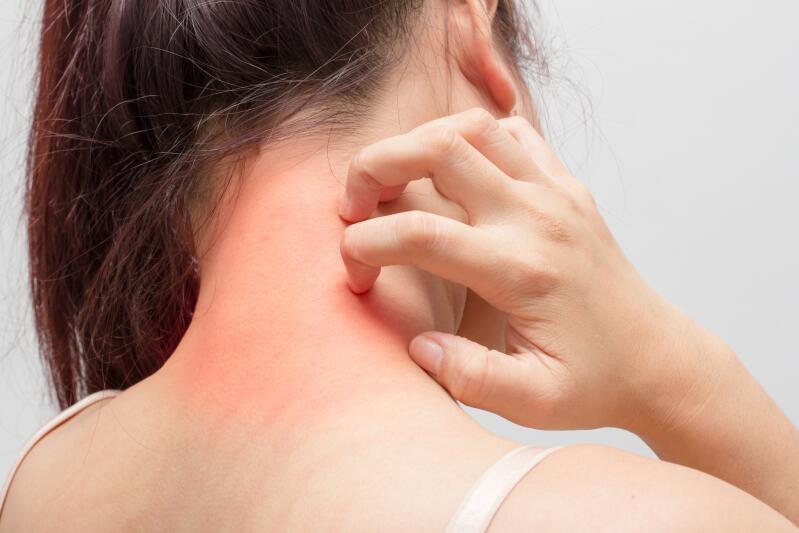-
Your concerns
Our articles to help you gain a better understanding
-
Our solutions
-
Ducray Dermatological laboratories
Our articles to help you gain a better understanding

Eczema is a disease characterized by red plaques on the skin (eczema lesions). The location of the eczema plaques varies, but the mechanism by which they appear and disappear is always the same.

Summary
Eczema plaques are red plaques that are poorly delineated, i.e., with poorly defined contours.
A flare-up of eczema, or acute eczema, consists of four successive phases:
During a flare-up of eczema, it is usually not possible to separate these four phases, only the symptoms of eczema are observed, i.e. red, rough and itchy plaques. The eczema plaques heal without scarring, except in rare cases where scratching has been particularly intense.
Chronic eczema is characterized by a thickening of the skin. The skin often becomes darker and forms squares. Chronic eczema plaques are more common in older children and adults. These eczema plaques are more difficult to treat, but may eventually disappear in the same way as acute eczema plaques.
The various symptoms of eczema, namely red plaques, itching and dry skin, cause a lot of discomfort on a daily basis. The appearance of red plaques on the body and face can lead to a loss of self-confidence and fear of other people staring. Starting treatment at the first small eczema plaque can quickly stop the flare-up and improve quality of life, as well as avoid certain complications such as superinfections.
Skin prone to atopic eczema, contact eczema, chronic eczema and/or, eyelid eczema
NEWSLETTER
Dermatological expertise
To better understand your skin and hair, discover our exclusive content and innovative care products designed to improve your quality of life..